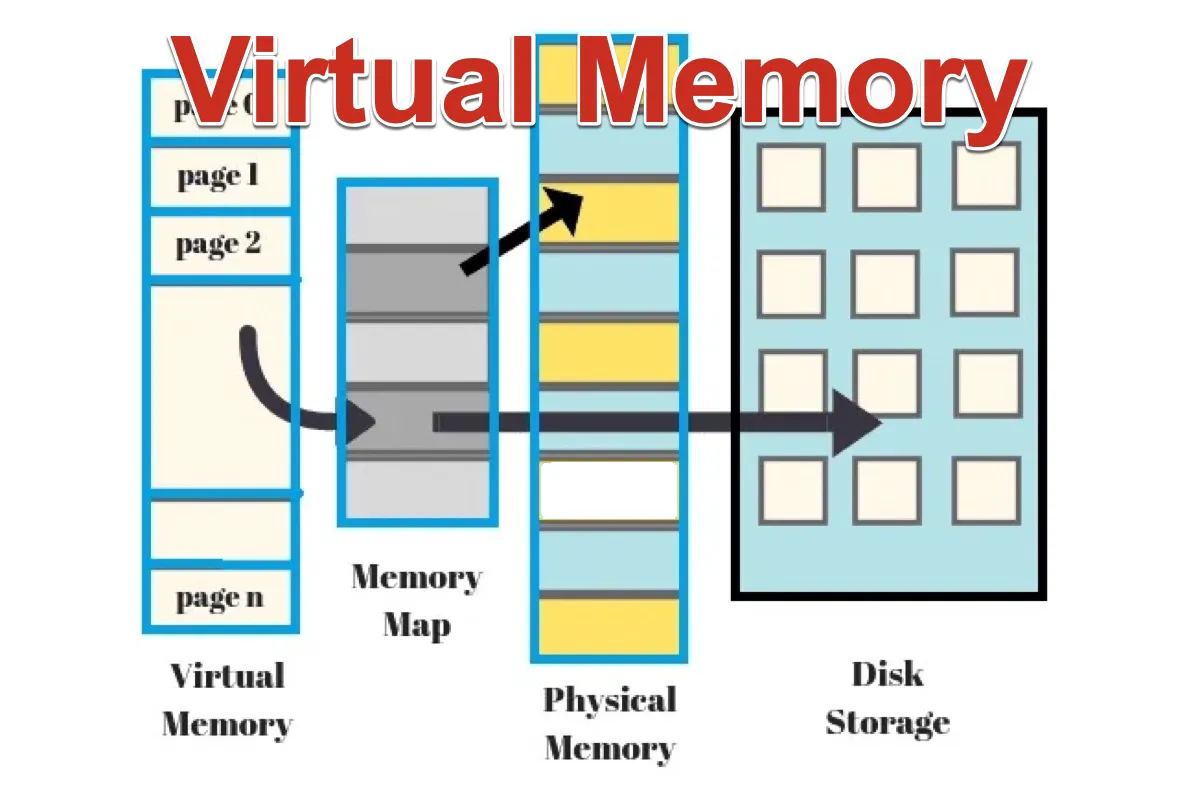Virtual memory is a computer system memory management technique that allows a computer system to provide an effective memory space larger than the actual physical memory installed in the system. It is an example of abstraction – abstracting away the physical memory and making a larger and more efficient memory space to draw from.
Virtual memory is implemented using both hardware and software techniques. The hardware portion contains various memory management components, such as page frames, page tables, virtual memory address spaces, and virtual memory management techniques, such as paging and segmentation. The software portion consists of an operating system with special memory management routines designed to manage the virtual memory system.
Virtual memory allows a computer to transparently use memory that it does not have installed in the system. Files that are not opened in the current session are “swapped out” or “paged out” to the slower storage device. When the file is used again, it is paged in into physical memory which is faster.
An important benefit of virtual memory is that it allows memory to be shared and reused. For example, RAM can be shared between processes, and files can be shared between multiple users. This sharing makes much better use of available memory by reducing the need to store multiple copies of the same data in different parts of the system.
Virtual memory is widely used in modern operating systems, from small embedded systems up to distributed server systems. It is essential for users of modern computer systems to be familiar with the basics of virtual memory and how it affects the performance of the computer.





